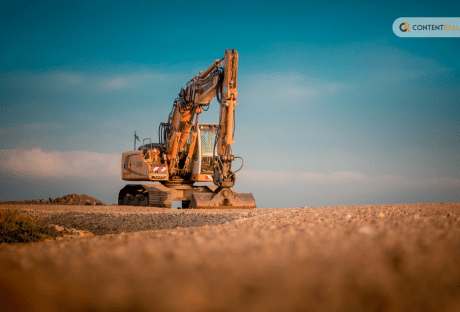Finding the perfect opportunity can be challenging.
No worries, as job search engines will aid you in your search. These platforms compile job listings from various sources, making discovering openings matching your skills and preferences easier.
Here Are Ten Best Job-Boards In The US In 2023
Take a look at the ten best job search engines in the US for 2023; they can make a significant difference in streamlining your process and connecting you with potential employers efficiently.
1. Lensa

Lensa has become one of the top job-boards in the US for job seekers of various skills and backgrounds. Lensa’s powerful job search engine scans numerous job sites and gathers the most relevant opportunities in one place. It also offers job alerts to keep you updated with the latest postings.
Lensa’s convenient features, such as keyword filtering and date-posted options, enable you to refine your search further. This job board suits everyone, from college students seeking internships to experienced software developers looking for new challenges.
Employers and recruiters also benefit from Lensa, as it allows them to browse a vast pool of qualified candidates and connect with them directly.
Additionally, Lensa provides useful resources like salary data and employee reviews to help guide you in your job hunt. For those seeking specialized roles, particularly in tech jobs, this platform ensures a tailored experience.
Subscribe for email alerts to stay informed about your industry’s latest opportunities and trends. With Lensa, you have a reliable partner in pursuing a fulfilling career.
2. Monster.com
Monster.com is user-friendly, allowing job seekers like you to upload your resume and get matched to relevant positions quickly.
For skilled professionals such as web developers, Monster offers a variety of job listings and remote work options. The site also provides valuable salary research tools to help inform your job hunt while offering essential career coaching services to sharpen your interview preparation.
Knowing the benefits and tools on Monster.com can make a difference in your job search. This platform may just help you find your next opportunity.
3. Dice

If you’re looking for tech jobs, Dice should be on your list of US job sites. Dice is a specialized job-boards for professionals seeking roles in software development, web development, and other technology-related industries.
You’ll find job listings from startups to Fortune 500 companies on Dice. The key benefits of using Dice are its focus on tech jobs and the ability to upload your resume for potential employers to view. Unlike some other niche job-boards, Dice provides a job search engine and job alerts so you can stay updated on the latest openings in your field.
4. Linkedin
LinkedIn continues to be a leading job board in the US for job seekers of all backgrounds. This platform stands out with its focus on professional networking and a user-friendly interface. LinkedIn allows you to filter by job title, location, and remote work possibilities when searching for job opportunities.
Aside from job searching, LinkedIn assists in expanding your professional network. You can connect with peers in your field and seek advice from experienced professionals. The platform also offers valuable career advice, salary research, and interview preparation.
5. GoogleForJobs

GoogleForJobs also offers a user-friendly interface that simplifies your job search process. It caters to various industries, including software and web developers. GoogleForJobs streamlines hiring and recruitment.
This platform accumulates job listings from various websites and makes them easily accessible. This eliminates the need to visit multiple job websites, helping you save time and effort. Additionally, it provides customized job alerts based on your preferences and qualifications.
Employers recognize the benefits of GoogleForJobs, and by advertising on this platform, they enhance their employer brand, attracting top-notch candidates like you. Happy job hunting!
6. ZipRecruiter
ZipRecruiter offers job seekers the chance to match with open positions based on their skills and requirements. Unlike LinkedIn or Indeed, Ziprecruiter stands out as a job board and aggregator, compiling listings from various sources such as websites, recruiters, and niche job boards.
As a job seeker, you will appreciate their search engine capabilities, allowing you to filter by job title, location, and remote work options. Plus, there is an added benefit of receiving job alerts customized to your preferences.
Building a profile on the site makes your resume more accessible to a broader range of recruiters and hiring managers. Web and software developers especially can find targeted job opportunities in their field.
7. WeWorkRemotely

WeWorkRemotely is one of the best job board options for remote work opportunities in the US. You will find jobs across industries, including web development, design, customer support, and more.
WeWorkRemotely attracts recruiters and employers from reputable companies, increasing your chances of finding high-quality remote work options. This site also offers valuable career advice, interview preparation tips, and salary research resources to help nail your job hunt.
One aspect to consider is the costs associated with using the platform. There may be some costs for premium features and offerings, but its reputation and valuable resources make it a worthwhile investment. So, take advantage of WeWorkRemotely to find remote job opportunities that suit your skills and aspirations.
8. Ladders
Ladders is a well-known job board, popular among job seekers focusing on high-level positions. This platform offers listings for various industries but specializes in roles with a salary range of $100,000 and above.
Ladders emphasizes professional networking through its integration with LinkedIn, bolstering your chances of discovering new job prospects. Their reputation ensures exposure to the right pool of highly skilled candidates. Although posting positions may involve costs, the value it delivers in qualified and committed applicants makes it a top choice among Fortune 500 companies and innovative startups.
Remember that job search engines, like Indeed and ZipRecruiter, may aggregate listings from Ladders, offering you another avenue for exploring available positions. However, for a direct experience with features tailored for high-income professionals, visiting Ladders’ website is a smart move in your job search.
9. FlexJobs

Flexjobs will be among the top 10 job boards in the US, providing job seekers with remote work opportunities. The platform caters to various industries, featuring software and app development positions, web developers, and many other job titles. As a job search engine, Flexjobs simplifies the job hunt by enabling users to filter job listings by location, job title, and more.
Flexjobs is a cost-effective option with a solid reputation for connecting job seekers to potential employers and startups. This job board stands out for remote work opportunities, as it balances niche and broader categories for job listings.
10. AngelList
If you’re interested in startups and technology companies, AngelList is one of the best job boards. As you search for jobs on this platform, you’ll see a variety of open positions in diverse fields, including software, innovative technology, and creative roles.
Angellist offers several benefits for tech-savvy candidates. You can quickly create a profile, add your skills, and connect your LinkedIn account for seamless networking. The platform also supports a comprehensive job search function where you can find remote work and easily apply to exciting opportunities.
To make the most of your experience on Angellist, maintain a detailed and accurate account, subscribe to its email alerts for job opportunities, and utilize its salary research features for informed job applications.
Conclusion
In your search for the perfect job, these top US job boards will be pivotal for providing diverse opportunities. Exploring these platforms increases your chances of finding a position that is perfect for your skills and aspirations.
Invest time in understanding how each job board works and tailor your application for the best results. Stay informed and use these resources to enhance your success in landing your next job. Good luck in your job search!
Read Also:






















